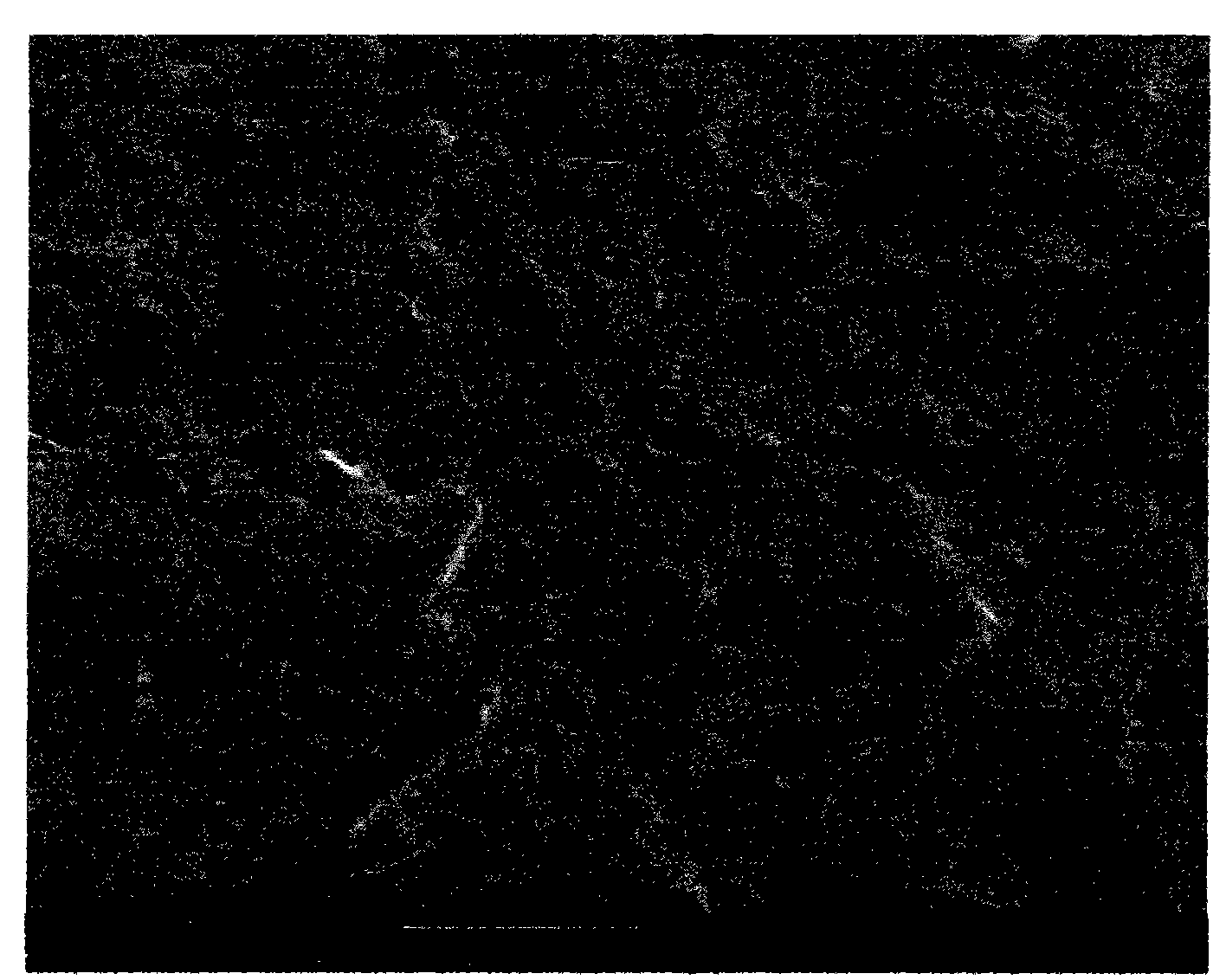Nano-composite coating with low surface energy and preparation method thereof
A nano-composite coating and low surface energy technology, which is applied in the direction of surface coating liquid devices, coatings, pre-treated surfaces, etc., can solve the problem of poor flexibility and adhesion of coatings, difficult to apply to application places, coatings Hardness cannot be adjusted and other problems, to achieve the effect of good self-lubricating property, improved performance, and adjustable hardness
- Summary
- Abstract
- Description
- Claims
- Application Information
AI Technical Summary
Problems solved by technology
Method used
Image
Examples
Embodiment 1
[0017]The specific steps of preparation are as follows: step 1, cleaning and roughening the surface of the substrate, so that the roughness of the surface of the substrate is 2 μm. In step 2, the spheres, rods, flakes, slurries, solvents, and inorganic pigments are mixed according to a weight ratio of 10:1.8:1.2:0.4:30:1 to obtain a transition layer slurry, and then Coat the substrate more than once with the transition layer slurry; wherein, the spherical object is alumina in the oxide, and its spherical diameter is 1 nm, and the rod-shaped object is polycrystalline mullite fiber in the silicon-aluminum salt ceramic particle, and its rod diameter is 500nm, the ratio of rod length to rod diameter is 28, the flakes are spinels in silicon-aluminum salt ceramic particles, its thickness is 1000nm, the ratio of flake length or flake width to flake thickness is 22, and the slurrying agent is made of conventional viscose The solvent is ethanol in alcohol, the substrate is metal alumin...
Embodiment 2
[0019] The specific steps of preparation are as follows: step 1, cleaning and roughening the surface of the substrate, so that the roughness of the surface of the substrate is 4 μm. In step 2, the spheres, rods, flakes, slurries, solvents, and inorganic pigments are mixed in a weight ratio of 10:1.9:1.1:0.7:23:1.5 to obtain the transition layer slurry, and then Coat the substrate with the transition layer slurry more than once; wherein, the spherical object is alumina in the oxide, and its spherical diameter is 13nm, and the rod-shaped object is polycrystalline mullite fiber in silicon-aluminum salt ceramic particles, and its rod diameter is 800nm, the ratio of rod length to rod diameter is 29, the flakes are spinels in silicon-aluminum salt ceramic particles, its thickness is 880nm, the ratio of flake length or flake width to flake thickness is 21, and the slurry forming agent is made of conventional viscose The solvent is ethanol in alcohol, the substrate is metal aluminum i...
Embodiment 3
[0021] The specific steps of preparation are as follows: step 1, cleaning and roughening the surface of the substrate, so that the roughness of the surface of the substrate is 6 μm. Step 2, first mix the spheres, rods, flakes, slurries, solvents and inorganic pigments in a ratio of 10:2:1:1:17:2 by weight to obtain the transition layer slurry, and then Coat the substrate more than once with the transition layer slurry; wherein, the spherical object is alumina in the oxide, and its spherical diameter is 25nm, and the rod-shaped object is polycrystalline mullite fiber in silicon-aluminum salt ceramic particles, and its rod diameter is 1000nm, the ratio of rod length to rod diameter is 30, the flakes are spinels in silicon-aluminum salt ceramic particles, its thickness is 750nm, the ratio of flake length or flake width to flake thickness is 20, and the slurrying agent is made of conventional viscose The solvent is ethanol in alcohol, the substrate is metal aluminum in conductor, ...
PUM
| Property | Measurement | Unit |
|---|---|---|
| thickness | aaaaa | aaaaa |
| thickness | aaaaa | aaaaa |
| surface roughness | aaaaa | aaaaa |
Abstract
Description
Claims
Application Information
 Login to View More
Login to View More - R&D
- Intellectual Property
- Life Sciences
- Materials
- Tech Scout
- Unparalleled Data Quality
- Higher Quality Content
- 60% Fewer Hallucinations
Browse by: Latest US Patents, China's latest patents, Technical Efficacy Thesaurus, Application Domain, Technology Topic, Popular Technical Reports.
© 2025 PatSnap. All rights reserved.Legal|Privacy policy|Modern Slavery Act Transparency Statement|Sitemap|About US| Contact US: help@patsnap.com


